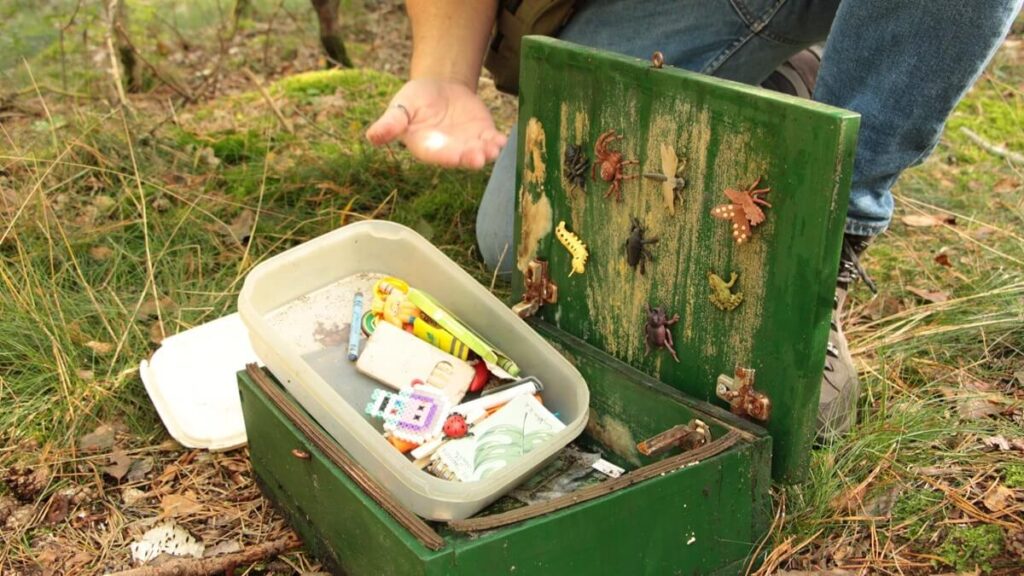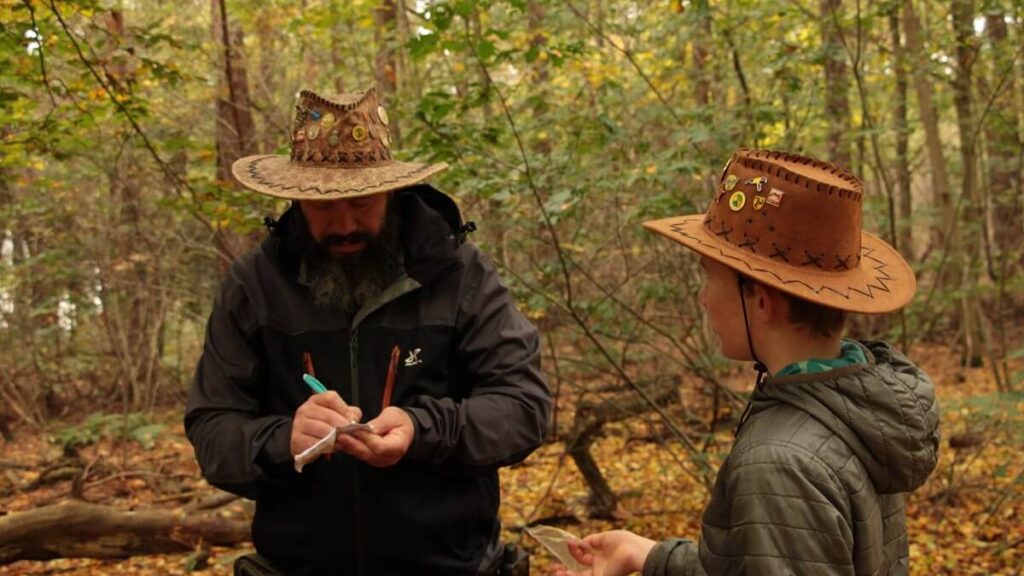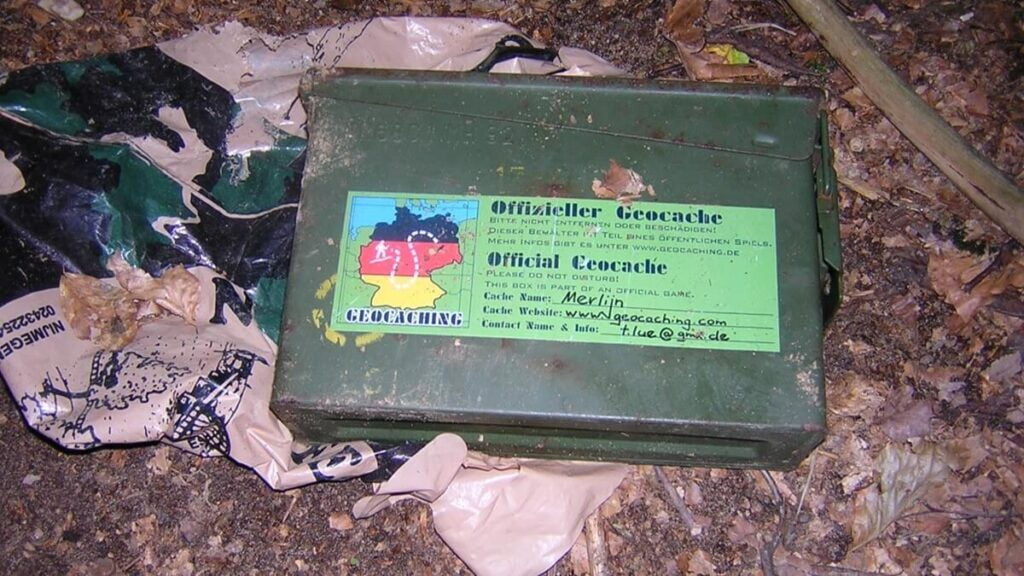Geocaching is nothing more than a treasure hunt based on coordinates. The fun part is that you get to visit places you wouldn’t normally go. You select a cache on the Geocaching map and walk or cycle to it.
At the zero-point, the cache is hidden. Geocaching is enjoyable because you visit new locations and discover different ways in which caches are hidden. It’s great to be active outdoors.
What is Geocaching?
Geocaching originated in 2000 when American Dave Ulmer decided to hide a cache and share the coordinates online. Since then, it has grown into a worldwide activity with millions of active users.
How Does Geocaching Work?
Geocaching is nothing more than treasure hunting for all ages using a GPS or your phone. You select a cache location via the app or online. Note that there are different types of geocaches.
Based on these types, you know what kind of cache it is. Then, you search for the treasure (the cache) that is hidden at the specified coordinates. At that endpoint, there’s a geocache container, usually containing some goodies.

How to Start with Geocaching?
To start, you need to know the coordinates of the geocache or treasure. You can find these on the Geocaching website or in the official Geocaching app. Some are only available to premium geocachers, which requires an annual fee to access.
Once you have the coordinates, you can enter them into your GPS (Read here: How to Load Geocaches onto My GPS?) or navigate via your phone and go geocaching. When you find a geocache, there’s usually a logbook inside. You write your team name and the date in the book.

So, don’t forget to bring a pen.
Later, log your find on the website. Don’t forget to put the treasure back in the same place for the next geocacher. Most caches contain goodies; take one and leave something of equal value in return.
We always carry some extra goodies with us to trade or replenish. Sometimes, there are also trackables in the cache that you are not allowed to keep and must place in another cache. Read our special Geocaching Trackables page to learn what these are and how to log them.
Geocaching Tips for Beginners
Finding caches can be challenging as a beginner. Here are some tips to get you started:
- Start with easy caches: Get used to searching for caches and using the GPS.
- Read the descriptions carefully: Find information about the difficulty level, size, and hints on where the cache is hidden.
- Always bring something to trade: Bring small items to trade in the cache. It’s fun if you also leave something behind.
- Be discreet: Not everyone knows what Geocaching is, so try not to be too conspicuous when searching for caches.
- Phone or GPS: In any case, take a phone or GPS with you and read this article: What is better: geocaching with a phone or a GPS?
What’s Inside a Cache?
A cache (or stash) is usually a waterproof box or ammo can containing goodies (SWAG) and a logbook. In the logbook, you write your name and the date. Only trade goodies for items of equal value and return the cache to the same spot.
Caches vary in difficulty and size, from small (micro) to large. Sometimes, special Geocaching tools are needed to open or retrieve the cache, like a fishing rod for a fishing cache.

Discover More About Geocaching
If you have a GPS, you can start Geocaching right away. A phone with GPS and an internet connection works too. The beauty is that you can do this anywhere in the world. Another example is Snag the Tag.
There are more than 3 million geocaches hidden in 190 countries! Wherever you go on vacation, there’s always a cache nearby. Most caches are hidden in unique places you wouldn’t easily discover otherwise. This is thanks to the local knowledge of the cache hider.
Cache Containers
On the Geocaching website, the size of the container you’re searching for is indicated. This is handy so that you know roughly what size to look for.

The sizes are as follows:
- Micro: Small containers that will only contain a log sheet, such as a film canister.
- Small: About the size of a sandwich, with a small logbook and small items.
- Regular: Often an ammo box.
- Large: A large sealed container.
- Other: Unusual geocaches that don’t fit into other categories, like a magnetic strip.
- Unknown: When a small extra surprise is needed, for example, when you know that the size of the container would completely give away the cache.
These containers can look very different. Don’t be fooled! Below are two examples of cache containers we’ve encountered.
Solving Geocaches
In both mystery caches and in the field, you sometimes need to solve puzzles. Some are easy to do, while for others, you really need some tools!
Good thing we have the Digital Geocaching Toolbox for you.
On this page, you’ll find all the tools you need during caching in a handy overview.
Geocaching FAQ
We regularly get questions from other geocachers or people wondering what we’re doing while caching. Below are the most frequently asked questions and answers:
Is Geocaching free?
Yes, you can start Geocaching for free. However, for some special premium caches, you need a paid membership to view the coordinates.
What do you need for Geocaching?
You can start with a smartphone or GPS and a basic (free) membership on Geocaching.
What’s a good Geocaching app?
Start with the official Geocaching app from Groundspeak. This app offers everything you need, whether you’re a beginner or an experienced geocacher.

